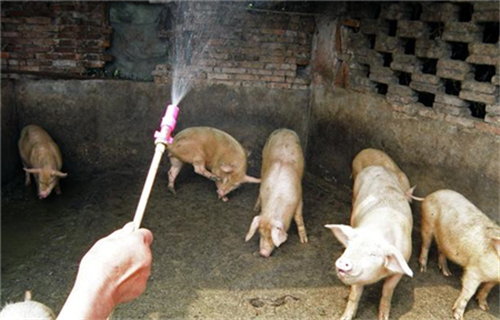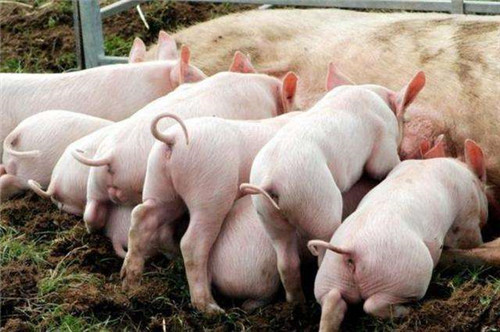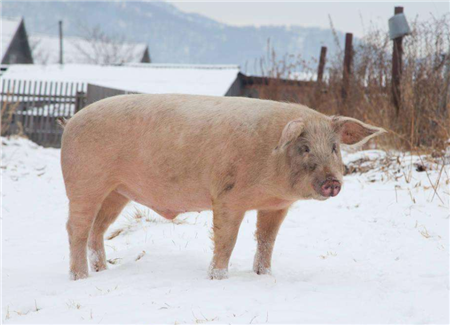These steps are the key to the correct operation process of re-feeding to reduce the risk of virus transmission.
Back-feeding is a measure for pig farms to feed gastrointestinal diseases or diarrhea products of diseased piglets to unaffected pregnant sows or reserve pigs in order to prevent and control viral diarrhea such as epidemic diarrhea (PED). In China, back-feeding has always been a hotly discussed means of prevention and control, it can be said that there are not many domestic pig farms dare to do back-feeding. The focus of the discussion is whether other viruses, such as blue ear virus, pseudorabies virus and even foot-and-mouth disease virus, will be transmitted to sows in the process of re-feeding, causing an outbreak of the disease. In this context, the discussion on the effect of re-feeding has become secondary.
Is re-feeding effective in the end? Do the advantages outweigh the disadvantages or the disadvantages outweigh the advantages? The author once discussed the problem of re-feeding with a veterinary expert who is active in Europe all the year round. He said that in European pig farms, the control of PED is mainly back-feeding, and the return-feeding operation will continue until the last sow has diarrhea.
Another Thai professor said that he believes that as long as more than 30% of the sows have diarrhea symptoms, backfeeding is successful, because the diarrhea virus has spread in the pig house, the infection is certain, but some sows may have been infected with the virus, re-infection only plays the role of activating memory cells, there is no diarrhea. Aren't pig farms in Europe afraid of the risk of the spread of other infectious diseases caused by re-feeding? Some domestic experts will say how the European pathogenic environment compares with the domestic pathogenic environment. Why can't domestic pig farms make the pathogen environment simpler? In the final analysis, biosafety is not in place.
The author is not a fan of regurgitation, but I don't think it is a dangerous operation either. If you have to rely on re-feeding to spread the disease in the pig farm, how do these pathogens get to the piglets? Of course, the sows passed it to them. Didn't the virus in the sows spread to each other during pregnancy? Since it is a virus, even if it is not as contagious as foot-and-mouth disease, it is enough to spread throughout the whole pregnant period of sows. Of course, the accurate search for return feeding materials is also of great help to reduce the risk of transmission of other unnecessary pathogens.
1. Basic operation of re-feeding
1. Selection of return feeding materials
The selection of back-feeding materials is the basis and key to the success of back-feeding. Piglets within 7 days old with obvious symptoms of epidemic diarrhea were selected. Symptoms include vomiting followed by diarrhea, severe dehydration, yellow and damp, and so on.
Choose live piglets, first wash the skin, wash off the disinfectant on the skin, to avoid disinfectant causing damage to the pathogen of diarrhea. Then the piglets were killed by bloodletting, and the blood was released as much as possible to ensure that the back-feeding material had good palatability.

two。 Acquisition of back feeding materials
The piglets were cut open from the chest to observe whether the piglets' lungs were fresh pink. If the color was dim, other pathogenic infections were suspected and could not be used as re-feeding materials. Observe the main internal organs of piglets from top to bottom and keep them intact and infection-free. The intestinal wall is generally translucent, the contents of the stomach are white milk clots, and the intestines are yellow diarrhea. The mesentery remains bright red with no chylous lines. If the piglets have severe congestion and edema in the intestinal wall and chylous lines in the mesentery, it is suggested that it is not a viral infection.
Select the stomach and intestines of piglets with typical symptoms, cut them off completely and put them in a basin mixed with ice.
3. Preparation of back-feeding sample
In order to ensure the survival of the virus, the whole preparation process must be carried out in a low temperature environment.
Cut the stomach and intestines of piglets with scissors as much as possible, then mix ice cubes into the blender, pour in skim milk (a piglet's gastrointestinal disease material is added to 250ml skim milk) and grind it. In the process of crushing, we should pay attention to the temperature should not be too high, if the temperature is too high, to stop to cool down.
The twisted material mixture is poured into the container (plastic bags, bottles, etc., which must be used after ultraviolet disinfection).
4. Feeding of return feeding materials
When the pig farm is relatively stable, epidemic diarrhea is only sporadic and is concentrated on reserve sows.
When there is epidemic diarrhea infection pressure in the pig farm, or when the pig is infected for the first time, the whole sow herd is re-fed, including weaning sows, pregnant sows after mating for 1 month and reserve pigs. Lactating sows and sows within one month of mating do not need to be fed.
After re-feeding, sows will have symptoms such as vomiting and diarrhea within 2-3 days, which is a normal reaction after infection with the virus, which usually stops quickly and resumes feeding.
Re-feeding is an emergency intervention scheme when there is epidemic diarrhea in pig farms. The selection and production of back-feeding materials according to the standard can avoid the spread of other pathogens to the maximum extent on the premise of ensuring the success of back-feeding.
2. Epidemic diarrhea and blue ear disease
Epidemic diarrhea in pig farms is generally accompanied by blue-ear disease, blue-ear disease is unstable in pig farms, epidemic diarrhea is also periodic fluctuations, high incidence of first-born pigs, sporadic distribution in pig farms.
Therefore, even if the pig farm has done enough vaccine immunization, back-feeding and other means of prevention and control, it is still unable to control the spread of epidemic diarrhea. At this time, pig farms should consider blue ear disease, the culprit. In unstable pig farms with blue ear disease, the immunity of infected sows is low, and neither re-feeding nor vaccine immunization has any effect. There are also not enough maternal antibodies in sow colostrum to protect newborn piglets from the complex delivery room environment.
The stability of blue ear disease in pig farms should be in the first place. The combination of vaccine immunization and Alexin control, especially the use of Ailoxin before and after vaccine immunization, can give full play to the effect of vaccine immunization and reduce the side effects of vaccine immunization. A stable pig farm with blue ear disease, other diseases, even epidemic diarrhea, are not uncontrollable "serious diseases".
- Prev

25 countermeasures for comprehensive prevention and control of diarrhea in piglets are indispensable.
25 countermeasures for comprehensive prevention and control of diarrhea in piglets are indispensable.
- Next

Diarrhea on suckling pigs, this method absolutely works!
Diarrhea on suckling pigs, this method absolutely works!
Related
- On the eggshell is a badge full of pride. British Poultry Egg Market and Consumer observation
- British study: 72% of Britons are willing to buy native eggs raised by insects
- Guidelines for friendly egg production revised the increase of space in chicken sheds can not be forced to change feathers and lay eggs.
- Risk of delay in customs clearance Australia suspends lobster exports to China
- Pig semen-the Vector of virus Transmission (4)
- Pig semen-the Vector of virus Transmission (3)
- Five common causes of difficult control of classical swine fever in clinic and their countermeasures
- Foot-and-mouth disease is the most effective way to prevent it!
- PED is the number one killer of piglets and has to be guarded against in autumn and winter.
- What is "yellow fat pig"? Have you ever heard the pig collector talk about "yellow fat pig"?

